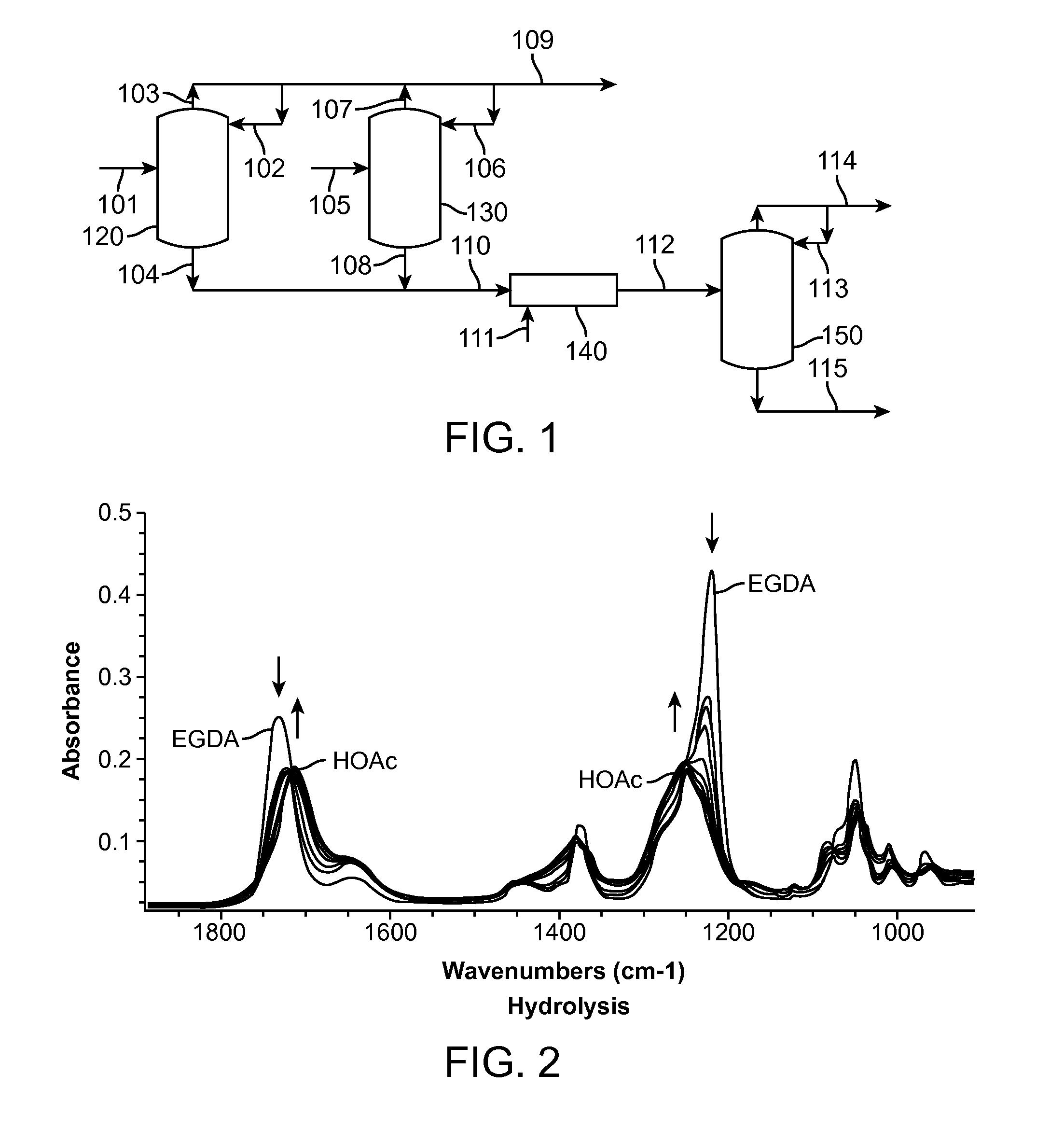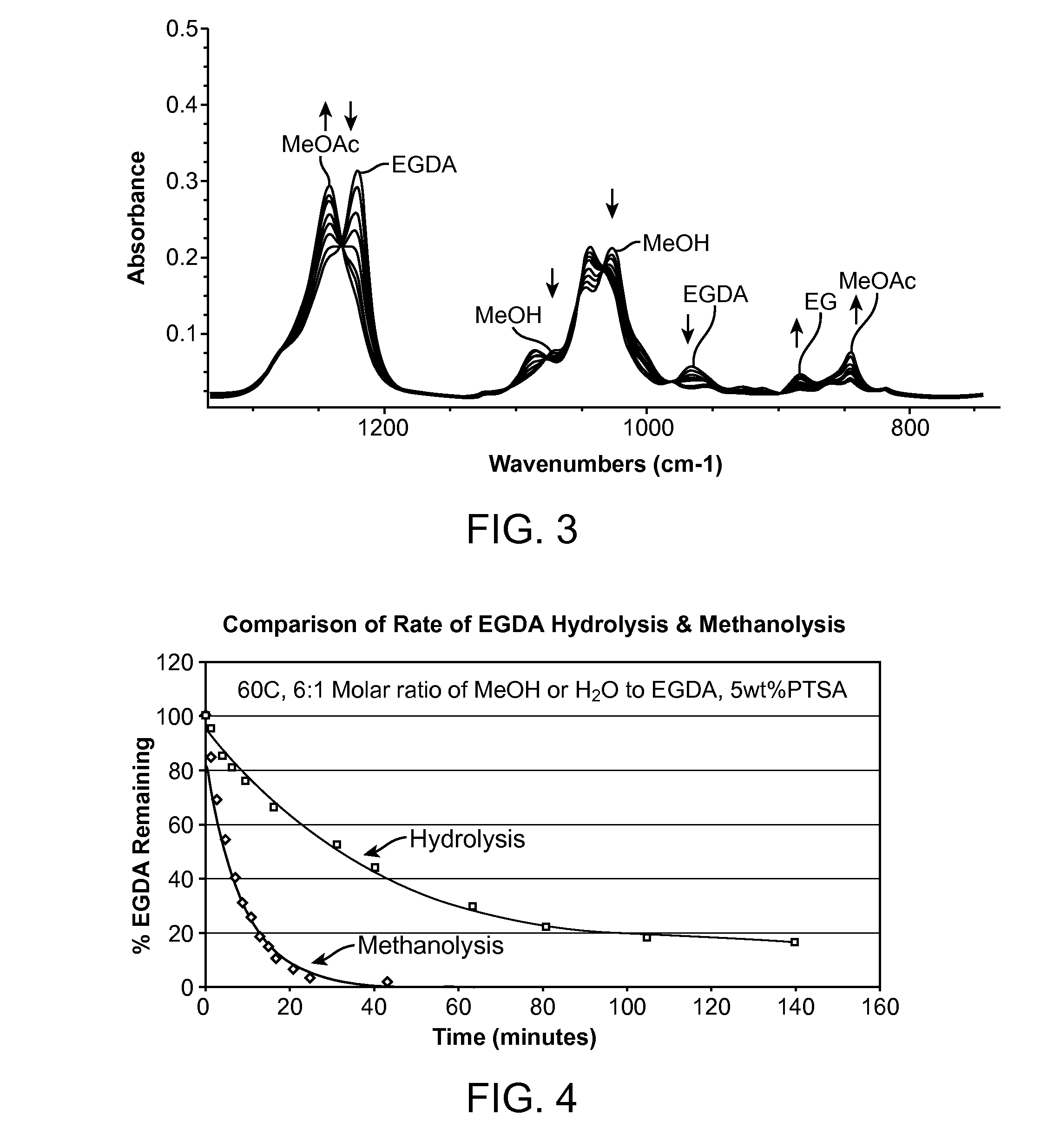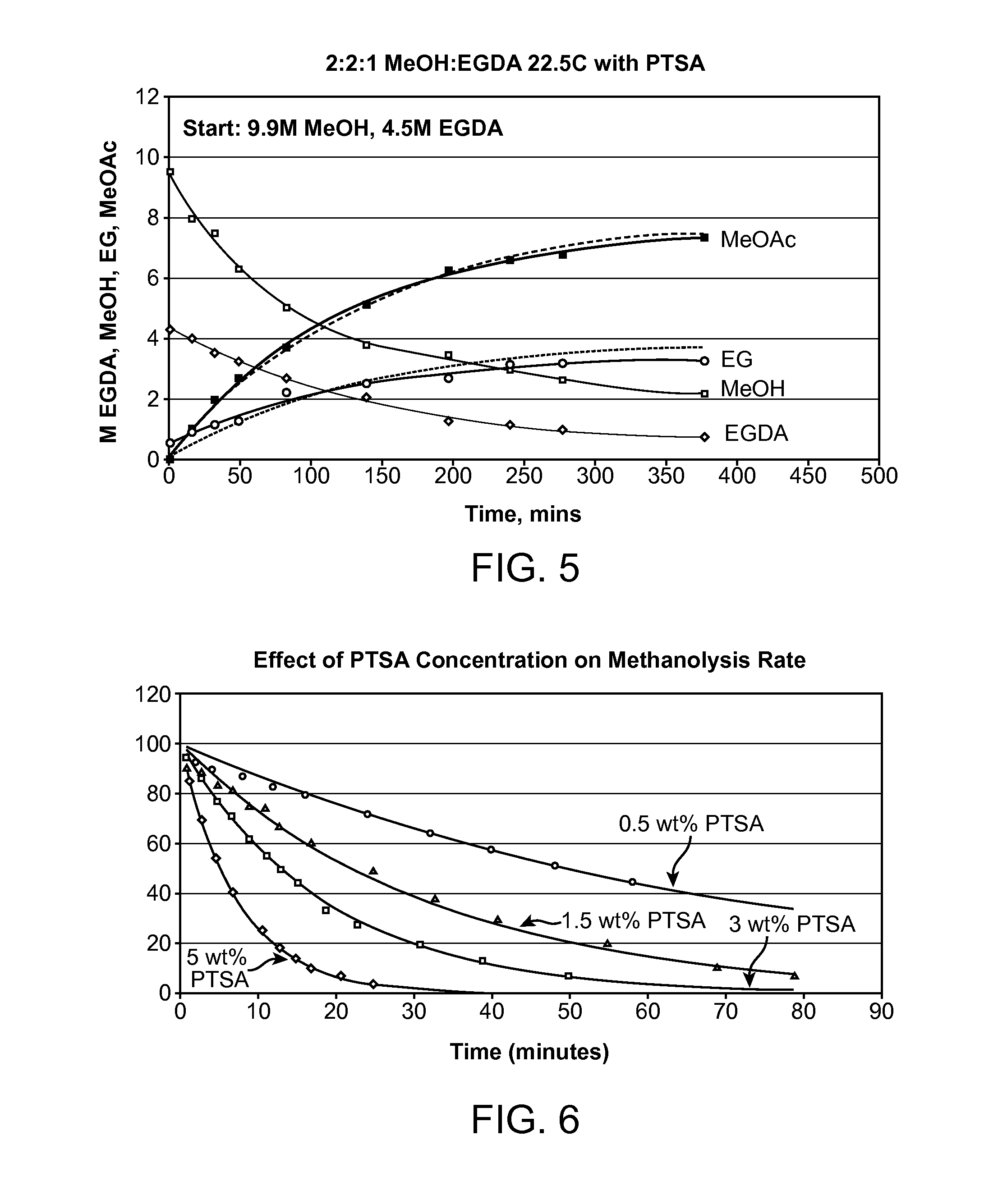Vinyl acetate production process
a technology of vinyl acetate and production process, which is applied in the field of preparation of vinyl acetate, can solve the problems of high cost of palladium and gold, logistical complexity, and energy-intensive separation of acetic acid from water, and achieve the effect of improving the overall yield of the overall process
- Summary
- Abstract
- Description
- Claims
- Application Information
AI Technical Summary
Benefits of technology
Problems solved by technology
Method used
Image
Examples
example 1
[0046]A methanolysis run was carried out at 22.5 degrees Celsius with a solution comprising 2.2:1 molar ratio of MeOH:EGDA with 5 wt % PTSA catalyst. FIG. 8 contains overlaid spectra obtained over a period of 6.5 hours. Reactions were carried out for both methanolysis and hydrolysis and analysis by GC at run termination indicated that rates were sufficiently slow to allow monitoring by periodic FTIR analysis. In order to identify spectroscopic features and as a guide to aid in generation of the multicomponent calibration models required for data analysis, a few methanolysis runs were carried out in which the solutions were periodically monitored by removal of aliquots for FTIR analysis.
[0047]The methyl acetate peak, the left most peak labeled MeOAC, rises as the ethylene glycol diacetate peak, the right most peak labeled EGDA, falls. This indicates that the methyl acetate is formed by the disappearance of EGDA, as predicted by Equation 1. Furthermore, the reaction appears to consume...
example 2
[0048]As can be seen in FIG. 9, the reaction takes place at a much slower rate and the formation of MeOAc is substantially inhibited at the lower reaction temperature 0 degrees Celsius. Moreover, the EGDA remains largely present after a 6.5 hour run of the experiment.
example 3
[0049]The reaction of Example 1 was also carried out without the aid of a catalyst. As can be seen, by inspection of FIG. 10, there is no MeOAc peak, thereby indicating that no reaction has taken place in the absence of the acid catalyst.
PUM
| Property | Measurement | Unit |
|---|---|---|
| wt % | aaaaa | aaaaa |
| temperature | aaaaa | aaaaa |
| temperature | aaaaa | aaaaa |
Abstract
Description
Claims
Application Information
 Login to View More
Login to View More - R&D
- Intellectual Property
- Life Sciences
- Materials
- Tech Scout
- Unparalleled Data Quality
- Higher Quality Content
- 60% Fewer Hallucinations
Browse by: Latest US Patents, China's latest patents, Technical Efficacy Thesaurus, Application Domain, Technology Topic, Popular Technical Reports.
© 2025 PatSnap. All rights reserved.Legal|Privacy policy|Modern Slavery Act Transparency Statement|Sitemap|About US| Contact US: help@patsnap.com



